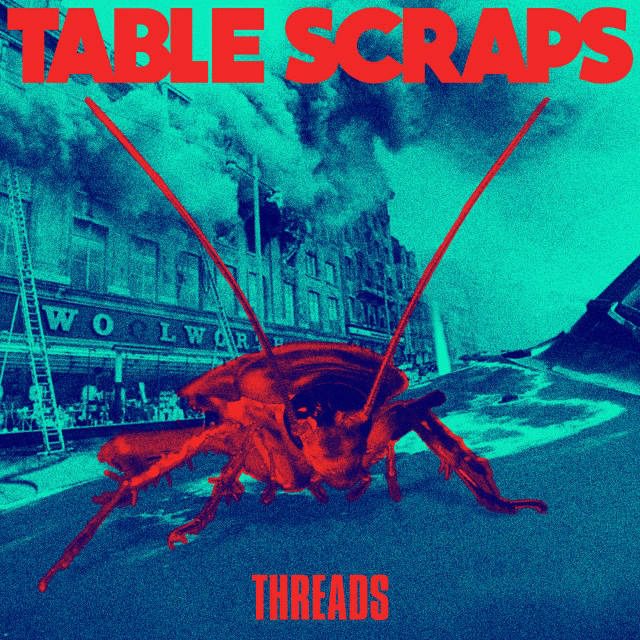
Her Sex-Positive Video Went Viral. Why Did TikTok Keep Taking It Down?
On the evening of Tuesday, June 15th, after more than a year of relative isolation, an aspiring singer named Lily Davies entered a recording studio in Toronto for her first post-pandemic writing session with strangers. The 20-year-old had scribbled a slew of lyrics earlier that day after a boozy brunch; she was also enamored with the Doja Cat single “Need to Know,” which incorporates a chanting, onomatopoeic chorus. Working closely with her producer and boyfriend, Caleb Jacob, Davies built a song called “FMRN,” all insistent synth, rowdy 808, and blunt desire: “Can you come fuck me right now?”
The following night, Davies posted a snippet of the come-hither chorus on TikTok, hoping to get app users excited before the song was released and create a tidal wave of streaming when it finally came out. None of her music-related posts as LilyIsThatYou had connected with users before, but the “FMRN” clip — gleeful and decidedly PG, with Davies jumping along to the lyrics as her boyfriend grins ear to ear — drew over a million views in 24 hours. At a time when the attention of nearly every A&R in the music industry is trained on TikTok, eager to sign any artist showing rapid growth, this type of moment is invaluable; Davies says she was crying for joy by the time it hit 25,000 views.
blogherads.adq.push(function () {
blogherads
.defineSlot( ‘medrec’, ‘gpt-dsk-tab-article-inbody1-uid0’ )
.setTargeting( ‘pos’, [“mid-article”,”mid”,”in-article1″,”mid-article1″] )
.setSubAdUnitPath(“music//article//inbody1”)
.addSize([[300,250],[620,350],[2,2],[3,3],[2,4],[4,2]])
;
});
Then TikTok removed the video without warning, along with two other clips featuring the “FMRN” snippet. Popularity begets popularity on TikTok, so while the fragment of “FMRN” audio was still available, the disappearance of the key video with over a million views pumped the brakes on LilyIsThatYou’s viral momentum. The singer’s manager, Marvin Alyas, was already in communication with TikTok’s Canadian team; he says he was told the video “goes against community guidelines, likely falling under the adult nudity and sexual activity sections.”
“We had all these eyes on us, then all these eyes got removed instantaneously,” Alyas adds. Davies went from “super happy,” feeling like “my life is about to change,” to “what do we do now?”
IndieLand reached out to TikTok on Wednesday requesting comment on the reasoning behind taking down the “FMRN” video. Davies’ initial clip was back on the app Wednesday afternoon, a little less than two weeks after it had been purged. TikTok declined to comment on its decision to remove and then reinstate the video, instead providing a statement that said “we are thrilled that talented musicians like Lily are using the platform to express themselves.” Hours after the company issued that statement, another video with “FMRN” was also removed — and then subsequently restored.
This episode illustrates the power that platforms like TikTok have over artists’ trajectories in 2021. By now, TikTok’s wide reach is the stuff of music industry legend — in select instances, it is capable of delivering a song by an unknown act to legions of new listeners before lunch. But the platform can take away as quickly as it gives. And because services like TikTok are so dominant, they don’t always have to justify their actions, especially regarding smaller, independent artists.
“TikTok drives culture more than anything today, at least when it comes to music and the younger generation,” says Eric Parker, who manages rapper-producer Tiagz (4.2 million TikTok followers) among others. That means “policy decisions about what to censor have so much impact, and it’s especially unfortunate for [this to happen to] someone trying to make a career out of music, when this could be a thing that breaks it.”
The return of LilyIsThatYou’s initial “FMRN” video is good news as the song can finally be streamed in its entirety on Friday, and the singer remains a fan of TikTok. “Controversy pushes music forward,” she says. “I’m grateful that the video was taken down — it gave me more opportunity to talk about what the song means to me, which is that there shouldn’t be so much censorship of women who want to embrace their desire or sexual confidence.”
blogherads.adq.push(function () {
blogherads
.defineSlot( ‘medrec’, ‘gpt-dsk-tab-article-inbody2-uid1’ )
.setTargeting( ‘pos’, [“mid-article2″,”mid”,”in-article2″,”mid-article”] )
.setSubAdUnitPath(“music//article//inbody2”)
.addSize([[300,250],[300,251],[620,350],[2,4],[4,2],[3,3]])
.setLazyLoadMultiplier(2)
;
});
@lilyisthatyou this will do numbers & my manager will let me release it ✨speak into existence✨
♬ FMRN use this and change my life – LILY
A poetry-obsessed Billie Holiday fan, Davies started writing songs at age 13. Her very first single — last November’s “HeavenOrHell” — caught the ear of Alyas thanks to her flexible, quavering voice and unpredictable delivery.
The day of the “FMRN” session, Caleb had already played her a beat that she describes as “really good, just too weird.” But later that evening, in the studio, he crafted an instrumental that evoked late 2000s indie bands, maybe somewhere between early MGMT and Sleigh Bells. (Davies heard something different: “This beat reminded me of ‘Where Are Ü Now,’ ‘Sorry’-era Justin Bieber, which I felt was a really great phase of pop.”) Initially, the “come fuck me right now” line was part of a verse; she later cut out that snippet and slotted it in as a chorus. The whole thing was nearly finished in two hours.
Members of TikTok’s Canadian team were initially supportive of “FMRN.” But LilyIsThatYou’s million-plus-views clip was taken down anyway, and TikTok Canada employees were unable to get it restored before Wednesday. (Two other LilyIsThatYou videos were also removed from the app.) Another manager working in a different country says he had a similar experience: The local TikTok team was supportive of his creator, but when that influencer’s work was removed, he was unable to get any insight about why — meaning it would be hard to avoid repeating the mistake. The regional TikTok employees in that case also had no sway over the takedown decision.
@lilyisthatyou #duet with @kidcalebjacob Hope he’s ok in there I just keep hearing groans #fmrn #lilyisthatyou #fyp
♬ FMRN use this and change my life – LILY
TikTok has been accused of censorship in the past and often described incidents as accidental errors. In the wake of the murder of George Floyd, TikTok expressed regret for what it called a “technical glitch” that “made it temporarily appear as if posts uploaded using #BlackLivesMatter and #GeorgeFloyd would receive 0 views.” There was also an odd, if little-noted, “glitch” that directly impacted the music industry: In 2019, label employees told IndieLand that songs with explicit lyrics were failing to upload to TikTok properly, or older tracks with swears in them were being pulled down. “Due to an internal error,” a spokesperson told IndieLand at the time, “we inadvertently restricted explicit tracks from TikTok globally.”
In a “Transparency Report” published this week, TikTok said more than 61 million videos were taken down in the first quarter of 2021 for violating Community Guidelines or Terms of Service. Creators are able to appeal takedowns within the app — though Davies’ team was not aware of this option — and more than 2.8 million videos were reinstated after appeal. “We aim to be consistent and equitable in our moderation practices and will continue our work to reduce false positives through ongoing education and training of our moderation team,” TikTok wrote.
Even with that “false positive” statistic in mind, the recent removal of the “FMRN” clips is hard to understand. Other songs with the word “fuck” — not to mention all manner of sexually charged content — remain prominent on TikTok, whether that’s recent tracks like Doja Cat’s “Kiss Me More” (“I feel like fuckin’ somethin’”) and ppcocaine’s “PJ” (“bitch, did you hear what the fuck I said?”) or oldies like Akon and Snoop Dogg’s “I Wanna Fuck You” (no lyrical excerpt needed). “FMRN” “has a message of sex-positivity,” Parker says. “We should be free to talk about these things.”
Despite the fact that LilyIsThatYou’s primary video was temporarily gone, some users have still found their way to “FMRN,” which has now appeared in more than 2,900 TikTok clips. Her Spotify listenership increased as well, with monthly listeners rising from less than 100 to more than 6,000 — a modest overall number, but a massive percentage increase.
blogherads.adq.push(function () {
blogherads
.defineSlot( ‘medrec’, ‘gpt-dsk-tab-inbodyX-uid2’ )
.setTargeting( ‘pos’, [“mid”,”mid-articleX”,”in-articleX”,”mid-article”] )
.setSubAdUnitPath(“music//article//inbodyX”)
.addSize([[300,250],[300,251],[3,3],[620,350]])
.setLazyLoadMultiplier(2)
;
});
“I’m not bitter about [the takedown],” Davies says. “Seeing girls be so confident, be really sexy, really funny, using my sound — this is everything I wanted. My goal would be to have so many girls on so many platforms being so sexually confident that it forces the policies of these apps to change.”




